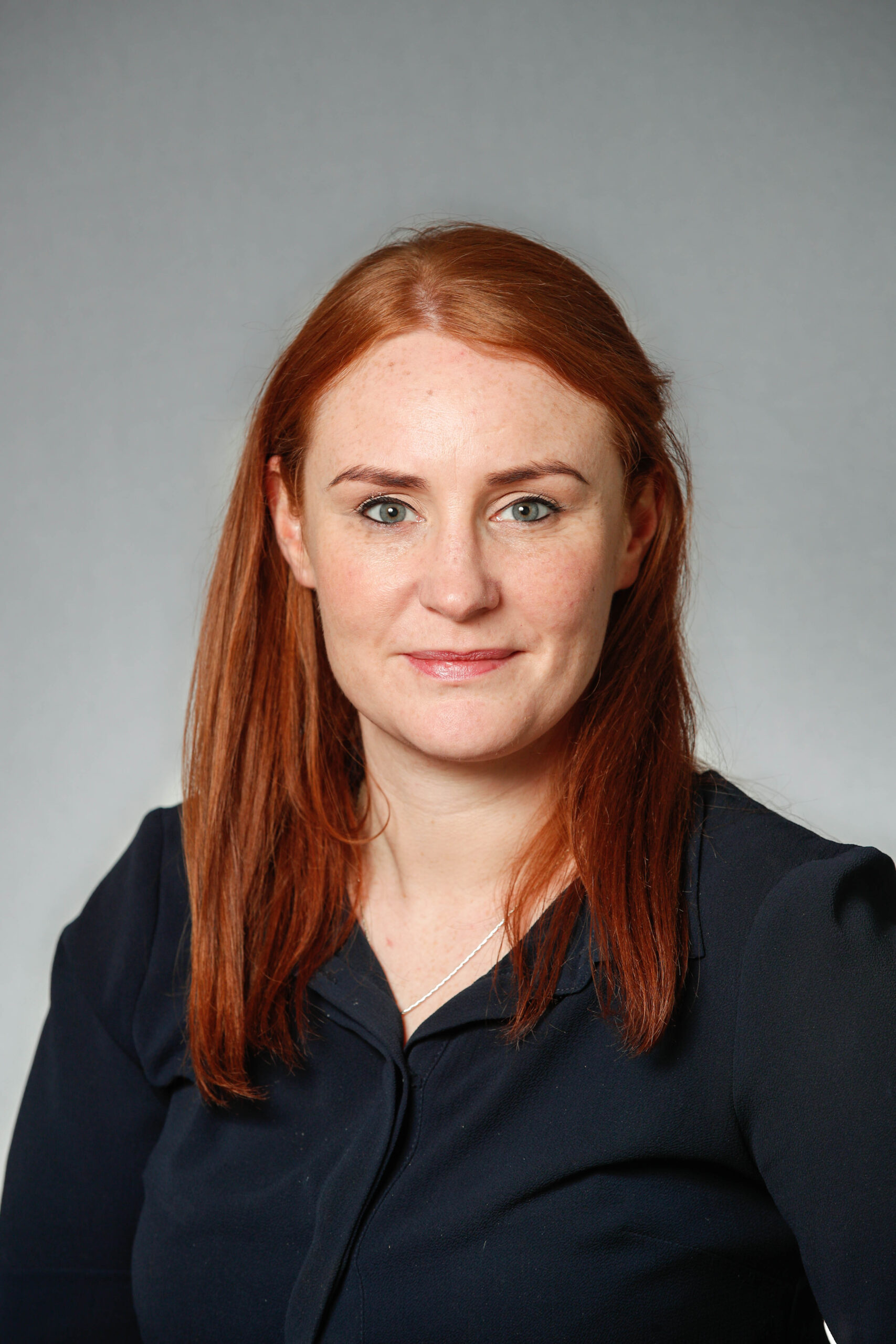Denise Tuffy has been with the CIF for eight years across a broad spectrum of contracting roles, including as project manager launching the Careers in Construction Campaign in 2020.
In October last year she became Director of Specialist Contracting. “Engagement is key,” she says. “There is so much going on in the sector as a whole right now, everyone is busy, which is great.”
But that level of activity brings its own challenges.
Specifically, getting everyone in a room at the same time, which is important for any policy advocate to reach a consensus across the sector.
“What it means for me, is a lot more one-on- one meetings to maintain and expand that level of engagement”, she says, exemplified by our call taking place en route to one such meeting.
“It’s important not to lose sight of the future to ensure that our members are being best represented and their future needs are being addressed and considered.
“It is just the reality of such a busy industry that I will be making that extra flexibility to be available individually to those members to ensure I am hearing their needs.”
Among the major operations this year will include negotiating a new Sectoral Employment Order (SEO) for the Electrical and Mechanical Sector after the 2018 SEO for the sector was struck down by the High Court.
There is also a big calendar shift for the year with Digicon becoming a standalone event and moving to October.
“It really showcases just how prominent the next generation of technology will be for the industry,” she says. There are few better examples for the preeminence of new technology in the industry than that of Building Information Modelling (BIM).
January saw the rollout of the BIM mandate for Public Works Projects.
This mandate, integrated into the Capital Works Management Framework, will be phased in over four years. This year, the mandate will be applicable to projects over €100million in value, specifically on the design side.
“Every six months, over three years, the mandate will cascade throughout the industry to the very last contractor,” she says, “so it is crucial to understand that now.”
To support the implementation process, Build Digital has been collaborating with the Office of Government Procurement to develop templates to guide users.
“It’s important that members are aware that Build Digital has released an inventory of training on BIM,” she says.

January saw the rollout of the BIM mandate for Public Works Projects
There are great challenges ahead for the sector too, the most pressing of which is the major risks associated with the intention to migrate Craft Apprenticeships to the Consortia Led Apprenticeship (CLA) model.
The National Apprenticeship Office (NAO) in February sent a request to all employers to provide feedback on changes to the model, which could dramatically reduce funding for apprenticeships.
“The apprenticeships model is under review now,” she says. “It is urgent that our members engage with the feedback process right now or else risk the collapse of apprenticeships in the industry.”
Both the CIF and the Electrical Contractors Association (ECA) have put out papers stating their views on the matter. “Electrical related apprenticeships make up just over 50 per cent of all craft apprenticeships in the country,” she says. “This highlights the significant disruption the intended migration will have on the Irish electrical industry.”
“It also risks damaging our international reputation,” she adds. “Currently Ireland is out competing on an international level, particularly in Europe. Changes to the funding of apprenticeships will have a serious detrimental effect on our ability to compete internationally.”
Further to this, it is also of major importance that apprenticeships in the newer Consortium Led Model, such as scaffolding, receive parity in funding which is currently not the case.
Another major development in the sector is the growing importance of Modern Methods of Construction (MMC), as being integral to the delivery of projects both commercially and within the Programme for Government.
Last year CIF launched the Smart Off-Site Association, which this year will be working to increase membership to inform the future of off-site construction.
“We need to see support from the Government to build a sufficient pipeline of work to allow for an organic off-site industry to develop that could compete on an international scale,” she says.
A major benefit of off-site, she notes, is that most factories will be built in the rural and regional areas, as opposed to highly developed urban areas.
“Off-site is an opportunity to boost regional economic success as well, fostering regional development while competing in an international market,” she adds.
Finally, as the industry makes efforts to remove barriers to access for women entering the industry and create a more equal balance Denise reflects upon her own career.
She shares how upon first joining CIF, “most of the meetings you would go to were all men, but the reality is I have seen how the industry has been hugely supportive of encouraging women into the industry.
“On a personal level, all those I have met have been supportive to see a woman in my position,” she says. “Exceptionally so.”
What has been remarkable is the pace of change in the industry. As she sees it “there was a time where you’d only see one woman in any meeting”.
“Today female participation, even over that short period of time, has definitely improved and grown. That’s hugely beneficial to the industry. And it’s only going to grow faster as new technologies and off-site manufacturing further erode the barriers of access to the industry for everyone.”








